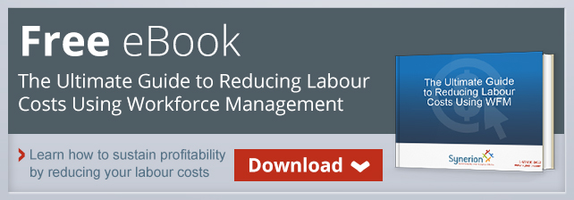
Workforce planning and forecasting may not be at the forefront of your mind, but it's an important tool to the overall success of your business. With the right software, businesses can reduce or eliminate some of the pitfalls in hiring and customer service. Learn the basics about labor force planning and forecasting to find why you need it implemented at your company.
Avoid Panic-Driven Hiring and Firing
Few businesses can avoid the highs and lows of productivity. Despite marketing and planning, there are inevitably times where businesses grow unexpectedly or find sales dwindling. For businesses not using workforce planning and forecasting software, these increases in sales often lead to immediate hiring. New hires are thrown into a maelstrom of activity, improperly trained, and are potentially wrong for the position. These suboptimal hires decrease workplace and customer satisfaction, and may ultimately lead to declining sales, which decreases productivity and leads to layoffs. This cyclical pattern can haunt a company and prevent it from achieving success.
Workforce planning and forecasting software uses prior performance to staff appropriately year round. A properly executed forecast can alert businesses to whether they need a core workforce that provides slight overstaffing during slow seasons but can expand to accommodate busy seasons, or whether employing a contingent workforce for busy times is more cost effective. By stabilizing hiring, companies can reduce unneeded payroll hours while still producing a quality product or service.
Increase Customer and Employee Satisfaction
Labor force planning and forecasting does more than just regulate your business. It also directly effects your customer and employee satisfaction. The ability to continuously produce a quality product, no matter the demand, is an incredible benefit to customers and an asset to your business. Workforce planning and forecasting software uses the raw data of your company's history to determine how to expand and what to eliminate to reach optimum customer satisfaction.
Employees perform better when their job is secure. Rather than wasting time searching for alternative opportunities or payroll dollars covering "unexpected absences" for job interviews, employees who have steady work and a management team who plans for the future can perform their tasks without added stress. This improved atmosphere, in turn, helps prevent turnover and increases job satisfaction. When customers and employees are satisfied, companies can expand.
Prepare for the Future
Many businesses tout having five year plans or ten year plans, but often those plans are based on speculation, not fact. Workforce planning and forecasting software takes your expectations of where your business is going and roots its future using hard data. The software delves into the data from previous years and identifies trends that could benefit from performance improvement. By identifying the need for another person to take calls, or needing a few more employees during the holidays, a workforce planning system can pay for itself by preventing businesses from making the same mistake year after year. While this may require scaling back to optimize processes, it ultimately ensure the future growth and success of the business.
A labor force planning and forecasting strategy is more than just another data point on a year-end review. It's an inclusive assessment of what the best course of action is for your employees, customers, and your company's success. Implementing a software system to assess your productivity ultimately saves money and increases future growth by addressing faulty systems early on. If you are feeling the pressure of high and low seasons, consider implementing a workforce planning software system to help navigate your business through the years ahead.
